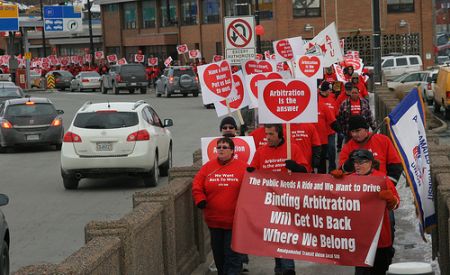It’s Still Muddy in the Woods
B.C.’s Stern Group, selected by NewPage trustees as the best option in the Port Hawkesbury pulp mill’s restructuring, are tiptoeing towards a decision to reopen the plant. By month’s end, no new power-rate agreement was in place and negotiations with the union had not begun.
Meanwhile, Liverpool’s Resolute/Bowater-Mersey mill, recent recipients of considerable government and employee largesse, were compelled to declare a three-week market-driven shutdown beginning next month.
Deeper in the woods, things are getting even rougher. Bowater has announced a 10 per cent reduction in pulpwood prices, and imported crews are replacing Nova Scotia workers, who themselves are unable to make a living cutting pulp.
A Natural Resources spokesman admitted to AllNovaScotia.com in late January that the Department’s knowledge of what goes on in our woodlands is always somewhere between two and 12 years out-of-date. A new land-use monitoring system will be needed before the province can begin to implement the long-awaited 50 per cent clear-cut rule.
Manufacturing and Moving
The downturn in our pulp industry contributed to a sharp drop in Nova Scotia’s manufacturing sales, Statistics Canada reported.
Does this slide represent a deep-running economic malaise, one that even the expected Warships-Start-Sometime boom in Halifax will be unable to mask for long? When the economy begins to rebound, will Nova Scotia and the rest of Atlantic Canada struggle to join the recovery, left behind with a weakened economy?
The extent of that challenge is revealed by Nova Scotia’s static population growth. The 2011 census population data, published in early February, shows that in the last five years, Nova Scotia’s population growth was the slowest in Canada at just .9 per cent provincially. During that period, more than 9,000 Nova Scotians left. The 4.7 per cent increase in HRM’s population exactly matches the percentage loss in Cape Breton Regional Municipality. While a smattering of small towns saw marginal growth, most towns and all of our rural areas leaked people big-time — out west or to Halifax.
Both the federal and the Nova Scotia governments, locked into a rigid austerity mindset, seem unable to imagine the broad strategy we will need to respond to demonstrably more difficult economic conditions.
The rest of us have some powerful thinking to do, some dramatic public policy repair work to perform, and political action to engage. We have no shortage of healthy starting points. Here’s one. Another. And another.
All Peter Kelly, All the Time?
Not any more.
When the powerful decide to shake up their boardroom, they act swiftly.
The push that finally defenestrated Peter Kelly was the Tim Bousquet Coast article that revealed the mayor’s remarkable mismanagement of the estate of a long-time friend. The Coast report put an end to what was left of the mayor’s re-election hopes, but it was mostly delicious icing spread on a very stale cake.
Weakened by the Concert Cash scandal, Council’s inability to control the pro-highrise bureaucracy (as evidenced in the St. Pat’s-Alexandra fiasco) and his mishandling of Occupy, Kelly was already two-thirds out the City Hall window. The Mike Savage candidacy was polished and had been announced with a range of new political backers (from McDonough to Younger to Andrew Black), who had an A-list of financial friends (Jim Spatz, Francis Fares, Victor Syperek) and support from the province’s leading message-pollster (Don Mills).
The fix was in and Peter Kelly was out.
Leading non-candidate Howard Epstein was left to ask the most sensible question: when Mike Savage can’t run as anti-Kelly, what will he stand for?
On the line
Several labour stories flashed across our screen in February: the beginning of contract negotiations at Capital Health, the employment of non-union labour to build the new airport hotel, the staff-and faculty negotiations at Dalhousie, the month-long Metro Transit strike, and a narrowly-confirmed seven-year(!) contract settlement at Oland’s.
At month’s end, several are still in the balance, and all are harbingers of hot months to come for the labour movement. Several themes have emerged here and across Canada: miniscule raises are on offer, wherever pay cuts are not in demand; employers are keen to take back benefits already won, particularly for younger workers and new hires; and nowhere do bosses hearts beat colder than when it comes to retirement benefits (but not their own).
For balance, this Forbes report.
Incomes of the filthy rich sustain pressures the rest of us can only imagine. The cost of a personal helicopter, with VIP options, rose a brutal 14 per cent in the past year, while the price of a thoroughbred racehorse was up by 16 per cent. Since 1976, the Cost of Living Index has risen only 400 per cent, reports the fabled business magazine, dwarfed by the Cost of Living Extremely Well Index, up a heartbreaking 900 per cent.
What will you do next year, if you can’t get a job, and can’t afford school? The goal-oriented always find something.



